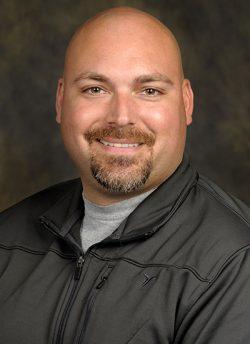
Credit: University of Central Florida
After the war is over, veterans face a new threat. They are more likely to have heart disease at a younger age than nonveterans, and this could herald a new health crisis on the horizon.
These results are published in a new University of Central Florida study appearing in the Journal of the American Board of Family Medicine.
“I think it’s sort of the first indications of a coming public health crisis for veterans,” says Ramon Hinojosa, an assistant professor in UCF’s Department of Sociology and the study’s author. “Because of the wars in Afghanistan and Iraq, we have a relatively large, new, younger generation of veterans who are going to survive for 30 or 40 years after their war experience.”
The study indicates that perhaps the “healthy-soldier effect” is no longer guaranteed. The effect refers to the tendency for active-duty service members to be more physically fit and less overweight than same-age, nonmilitary individuals. It’s a phenomenon that Hinojosa explores in ongoing research.
“The outcome of the analysis suggested that not only does the healthy-soldier effect not seem as potent as it once was, in fact, what I see is veterans tend to have cardiovascular morbidity earlier than nonveterans, and they tend to have a greater number of conditions,” Hinojosa says.
The researcher said the change could be due to the nature of conflict in Iraq and Afghanistan, modern warfare, changing diets, changing approaches to leisure and exercise, higher rates of obesity in younger veterans than nonveterans at the same age, and higher rates of drinking, smoking and mental illness.
In light of these results, Hinojosa said it is important for health practitioners to look closely at cardiovascular health for younger veterans so they can address preventative approaches to ward off early onset of cardiovascular diseases.
“I think that being aware we sort of have the first rumblings of what seems to be a health crisis will help us focus our attention on health resources and providing younger veterans with access to resources that can help them ameliorate the likelihood of early onset cardiovascular disease,” Hinojosa says.
The study used data from the National Health Interview Survey, a nationally representative health survey of individuals in the United States that’s conducted by the Centers for Disease Control and Prevention’s National Center for Health Statistics.
Hinojosa looked at five particular cardiovascular conditions reported in the survey and their association with veteran status and sociodemographic status, including age.
Responses from 153,556 individuals were used, and the study looked at pooled survey data from 2012, 2013, 2014 and 2015, the most recent available data at the time.
From age 35 to about age 70, veterans reported significantly more cardiovascular conditions than nonveterans. After age 70, nonveterans reported more cardiovascular conditions than veterans.
The switch could be due to fewer veterans surviving into older age because of cardiovascular diseases, Hinojosa said.
“It’s concerning to know that the physical benefits of military service seem to be not holding as well for the younger veterans,” Hinojosa says. “This suggests the health protective benefits of military service are not what they used to be. I think that should cause us to really look at what’s going on among the veterans after they leave military service.”
###
Hinojosa received his doctorate in sociology from the University of Florida, his master’s in sociology from the University of Illinois at Chicago and his bachelor’s in sociology from Grand Valley State University in Michigan. He joined UCF in 2014.
Media Contact
Zenaida Gonzalez Kotala
[email protected]
Related Journal Article
http://dx.




